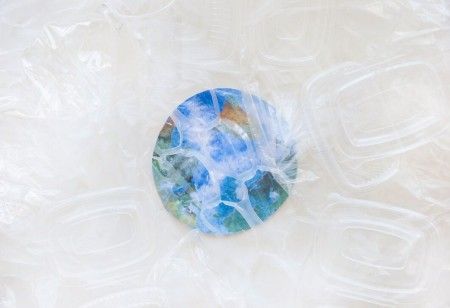
Microplastics have been discovered in various locations across the globe, ranging from oceans to mountains.
The United Nations Development Programme (UNDP) has reported that these minuscule plastic particles, measuring less than 5 millimetres, have permeated our oceans, soil, and even the air we inhale.
These small remnants can contaminate our bodies through the consumption of water, presenting a significant risk to our well-being.
A team of expert scientists at the Indian Institute of Science (IISc) has developed an innovative hydrogel to address the issue of plastic pollution. This sustainable hydrogel, as described in a press release by IISc in Bengaluru, features a distinctive polymer network that effectively captures and breaks down microplastics when exposed to UV light irradiation.
In the past, researchers have attempted to utilize filtering membranes in order to eliminate microplastics. Nevertheless, these membranes often become obstructed by these minuscule particles, making them impractical. To address this issue, the team at IISc, under the guidance of Professor Suryasarathi Bose from the Department of Materials Engineering, opted for 3D hydrogels as an alternative solution.
The official press release stated,"The novel hydrogel developed by the team consists of three different polymer layers – chitosan, polyvinyl alcohol and polyaniline – intertwined together, making an Interpenetrating Polymer Network (IPN) architecture. The team infused this matrix with nanoclusters of a material called copper substitute polyoxometalate (Cu-POM). These nanoclusters are catalysts that can use UV light to degrade the microplastics. The combination of the polymers and nanoclusters resulted in a strong hydrogel with the ability to adsorb and degrade large amounts of microplastics.''
The group pulverized food container covers and various everyday plastic items to produce two prevalent types of microplastics found in the environment: polyvinyl chloride and polypropylene. Additionally, a fluorescent dye was incorporated into the microplastics to monitor the absorption and breakdown levels by the hydrogel in varying environments.
Mr Bose added,"The hydrogel was found to be highly efficient – it could remove about 95% and 93% of the two different types of microplastics in water at near-neutral pH (∼6.5).''
We use cookies to ensure you get the best experience on our website. Read more...
Copyright © 2025 HomesIndiaMagazine. All Rights Reserved.